Onitsuka Tiger and the Evolution of Sneakers
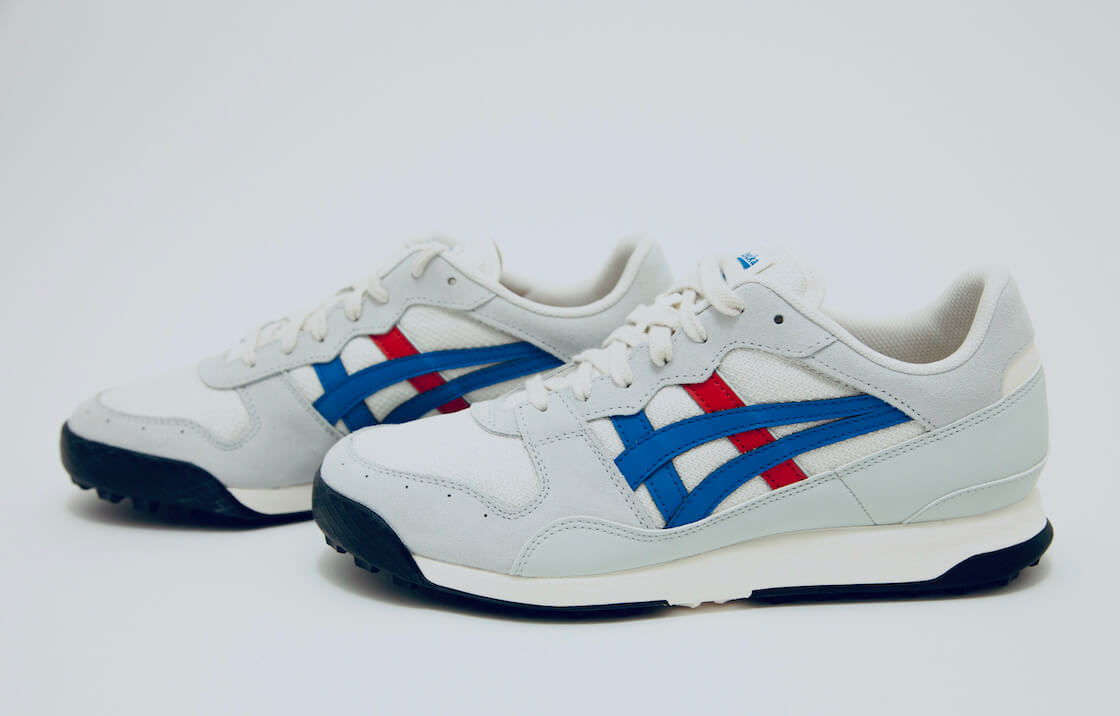
Onitsuka Tiger is one of the most storied shoe companies in history. Through the pioneering innovation of the ASICS forerunner, Onitsuka Tiger had a hand in changing shoe technology through invention or inspiration that still affects sports culture internationally. From its very beginning, Onitsuka Tiger was an aspirational brand.
- 1949 Onitsuka Co. Ltd is founded in Kobe, Japan.
- 1951 First successful shoe - a basketball court sneaker inspired by tentacle suctions dubbed “the Octopus Shoe.”
- 1953 First Onitsuka Tiger running shoe. The “Marathon Tabi” is a split-toe shoe resembling traditional Tabi socks.
- 1956 Became the official shoe of the Japanese Olympic Basketball Team.
-
1957 Barefoot Olympic Gold Medalist Abebe Bikila laces up his first pair of shoes and wins the Mainichi Marathon.
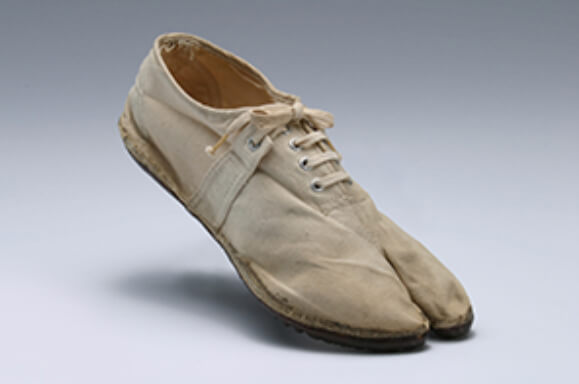
The 1953 Marathon Tabi

Kihachiro Onitsuka circa 1953

The 1960 Tiger Magic Runners
- 1964 Phil Knight and Prefontaine coach Bill Bowerman start Blue Ribbon Sports as the U.S. distributor for Onitsuka Tiger.
- 1966 The first branded Tiger Stripes appear on the “Mexico 66” shoes made for the 1968 Olympic Game pre trials in Mexico City.
- 1968 Bill Bowerman creates “The Cortez” for Onitsuka Tiger. Blue Ribbon Sports becomes Nike and both Nike and Onitsuka Tiger retain rights to the shoe. Nike keeps “The Cortez” name and Onitsuka Tiger renames their identical version “The Corsair.”
- 1972 Beginning of the Jogging Boom in America.
- 1976 Lasse Viren wins gold in the 10,000 meters at the Montreal Olympics wearing custom Tiger Runsparks and does his victory lap barefoot, holding the shoes above his head.
- 1977 Merged with GTO and Jelenk to become ASICS.
- 1978 Bruce Lee sports gold/black “Mexico 66” shoes and matching tracksuit in Game of Death.
- 1978 Releases “The California” - a jogging shoe with new developments like a flared sole and reflective tape on the heels at the height of the Jogging Boom.
- 1986 Released new Gel Technology.
- 1990 Opens the Research Institute of Sports Science in Kobe, Japan.
- 2002 Soft relaunch of Onitsuka Tiger.
-
2007 Mr. Onitsuka dies at the age of 90.
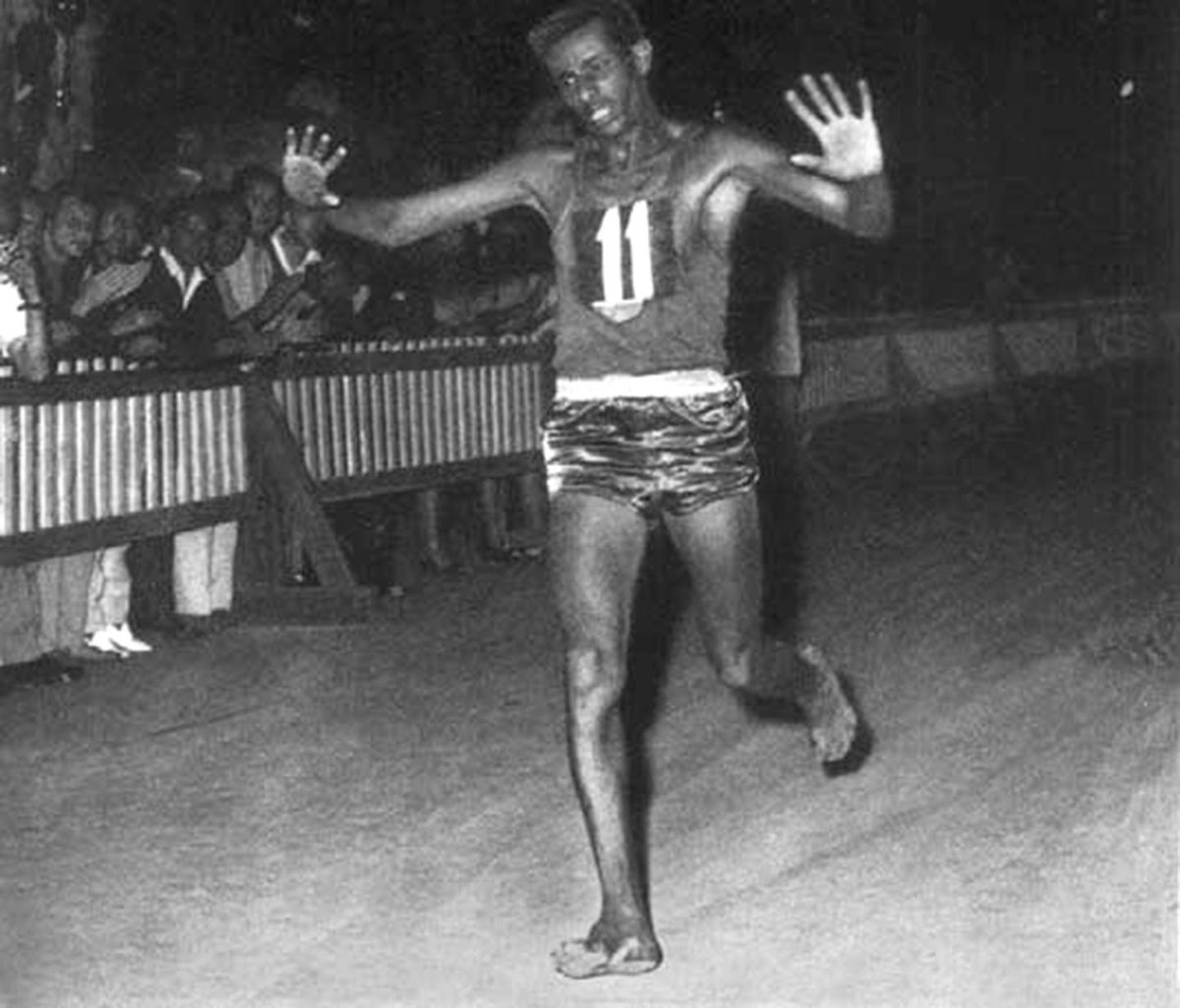
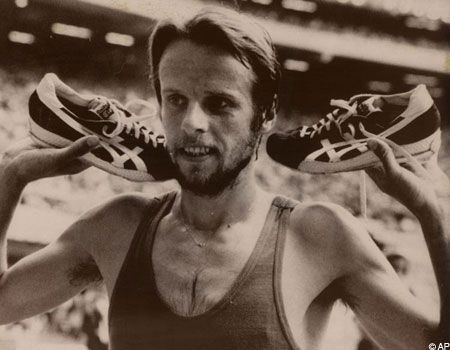
(Left: Abebe Bikila's runs barefoot in the 1956 Olympics. In 1957, he laces up a pair of Tigers. Right: Lasse Virens wins olympic gold in his custom Tiger Runsparks)

(Bruce Lee wearing a pair of gold Mexico 66 Tigers in Game of Death)
Former military officer Kihachiro Onitsuka recognized that many things needed to be done to save Japan from its cultural and economic depression after WWII. Looking for the best way to help demoralized youth - Onitsuka, inspired by the Roman poet
Juvenal’s idea of “a healthy mind in a healthy body” - put his life’s work into athletic shoes and founded Onitsuka Co. Ltd. in 1949.
With no formal training and working from his living room, his first shoes - intended for the Kobe High School basketball team - looked more like straw sandals than sneakers and were met with derision.
Over the next two years, Onitsuka watched countless games and practices, taking note of the most common issue the players experienced: Slip. The fast stop/start action on the court regularly resulted in players falling. Unlikely inspiration (which would become a common theme throughout the history of the company) came to him.
Eating an octopus salad, one of the tentacles became stuck to the side of the bowl. It would not come off and the thought struck him, “why not use the same suction cup grip of the tentacles on the soles?”
Testing proved too effective, but after some adjustments, they had it. Braking and cutting on tentacle-inspired rubber soles, the Kobe High School basketball team went on to win the championship that year. Word spread and quality improved so that
by 1956, Onitsuka Tigers had become the official shoe of the Japanese Olympic Team.
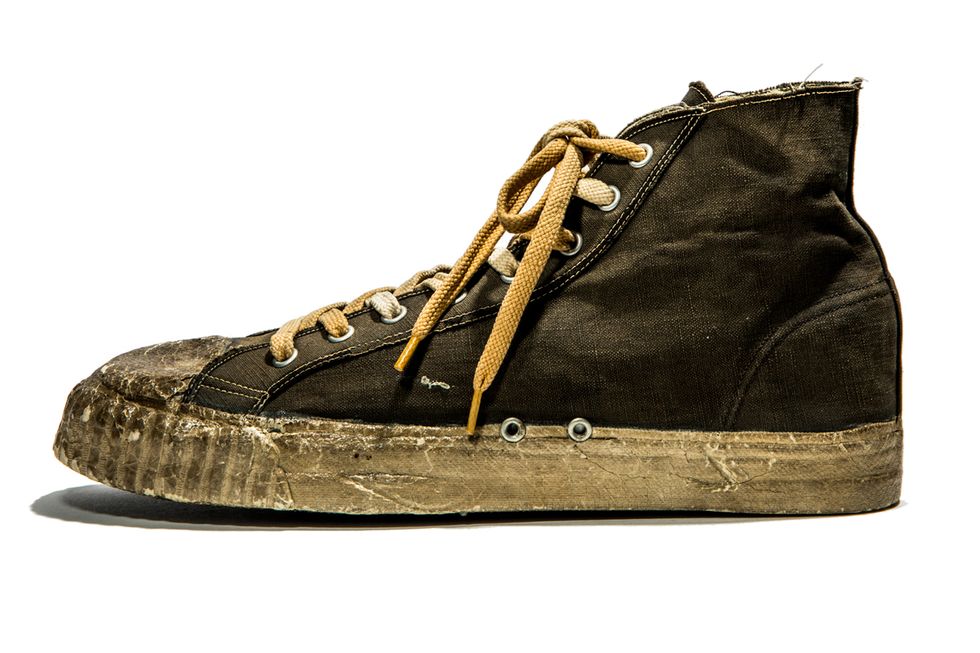

The 1951 "Octopus" Basketball Sneaker. The tread was inspired by the suction cups on tentacles and succeeded at giving players superior grip on the court.
Looking for other sports, Onitsuka created his first running shoe in 1953. The “Marathon Tabi” was modeled after the traditional split-toe tabi sock that were commonly worn by Japanese long distance runners. The “Marathon Tabi” were equipped with rubber soles and uppers made from more durable materials.
That same year, the “MARUP” shoe was released - designed specifically for marathon relay races by reducing fatigue during long-distance runs. The upper was made from vinylon, a material that is three times stronger than cotton and prevents sweating. Additionally, the shoes were equipped with heel sponges.
While Onitsuka further refined his line of running shoes, he consulted top marathoner Toru Terasawa, asking him what the biggest problems that long distance runners encountered. Terasawa simply replied, “blisters.” The blisters that formed 10 or 15 miles into a marathon turned runners' feet into hamburger at the end of 26.2. Japanese runners regarded the problem with a stoic fatalism - blisters were an inseparable dimension of the marathon, another test of endurance.
Beginning by consulting doctors about the formation of blisters, there were three problems to solve: Moisture, heat and friction.
Observing his own wrinkly toes in the bathtub, Onitsuka realized that shoes created their own bathtub for perspiring feet. They needed air circulation.
The company went to work, creating a sneaker with loose cloth on the top and perforations on the side to make them breathable and a double layered sole to protect from heat and friction. This shoe, the “Magic Runner,” also blew out air on the foot strike and sucked in air on the liftoff.
Terasawa was able to run a marathon for the first time without getting a blister.

The fame of Onitsuka Tiger running shoes spread internationally when iconic Ethiopian runner Abebe Bikila - known for winning the Olympic Marathon barefoot - laced up his first pair of shoes. In 1956 he didn’t run in shoes. In 1957, he ran in Onitsuka
Tigers.
Taking note in America, a young Phil Knight - fresh out of Stanford Business School - saw potential for the U.S. market. Along with legendary track coach Bill Bowerman, the two men created Blue Ribbon Sports to handle American distribution for Tiger.
Blue Ribbon Sports would later become Nike and many of Nike’s earliest trainers were made by Onitsuka Tiger engineers in Japan.
Onitsuka began the process of creating a trademark look to differentiate from other brands in 1960 (many early pairs closely resemble the three stripes used by adidas). After studying 200 variations - a curving three stripe pattern was introduced in 1966. Dubbed the “Mexico 66,” the shoes were made for the 1968 Olympic pre trials in Mexico City.
Unlike other branded designs, the tiger stripes had a real function on top of their identifying mark. The lacing of the shoes was integrated into the vertical stripe to improve stability and flexibility.

In 1968, Bill Bowerman created the “Cortez” for Onitsuka Tiger, but when the two companies split, both retained the rights to the model. Nike was given naming rights and Onitsuka renamed their identical version the “Corsair.” To further differentiate
the shoes, Nike created the swoosh.
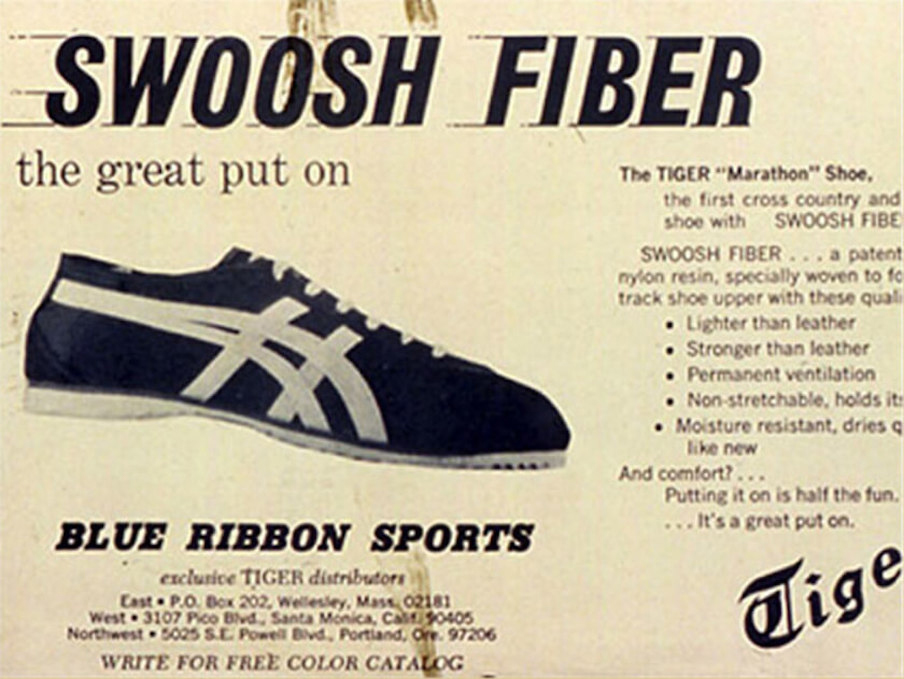



In 1977, Onitsuka Tiger merged with two other contemporaries to become ASICS - an acronym derivation from Juvenal that stands for Anima Sana in Corpore, “a healthy soul in a healthy body” - continuing the brand’s founding principles.
Onitsuka Tiger was quietly relaunched in 2002 and Onitsuka Tiger’s Nippon Made - a high-end line handbuilt entirely in Tokyo with high quality materials - rebooted the brands most iconic pieces beginning in 2008.
From a four employee business making sandal sneakers for school children, they have become one of the world’s most influential sneaker brands. Pursuing Kodawari - the relentless pursuit of unattainable perfection - Onitsuka Tiger and ASICS have
changed athletics and the way people move for 70+ years.

Today, Onitsuka Tiger is a fashion brand with the fusion of Japanese heritage craftsmanship and modern flair. There are few other brands that have done as much for as long.
No sneaker collection is complete without a pair.
To read even more about Onitsuka Tiger and the history and evolution of sneaker history, click here for a deep dive.
